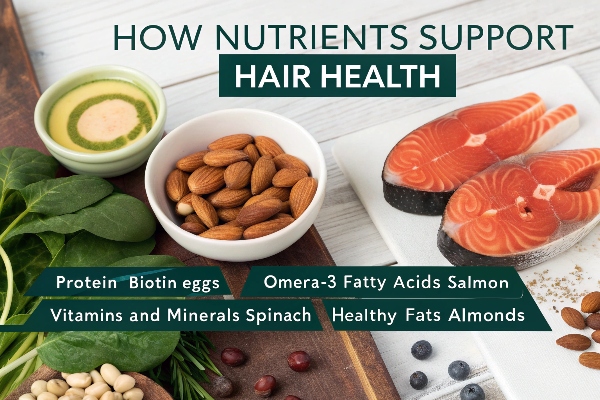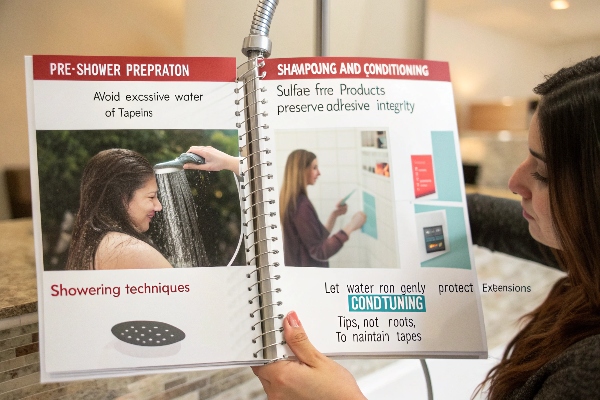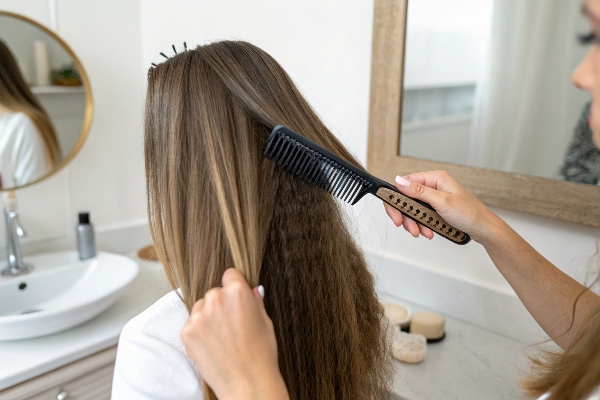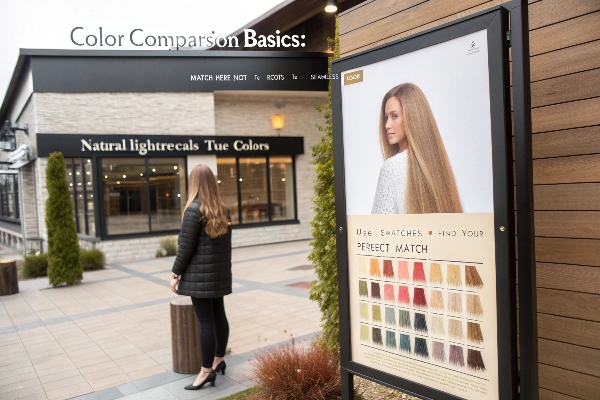I once bought what I believed to be real extensions, only to find they were synthetic. Here’s how to ensure your extensions are genuinely human hair before purchasing.
To verify if hair extensions are real, conduct a burn test. Real hair burns slowly with ash residue, while synthetic hair melts and smells like plastic.
This practical and straightforward test highlights real vs. synthetic extensions. Real hair gives a characteristic smell, similar to burning hair, while synthetic fibers leave melted beads. Additionally, genuine extensions can be styled with heat, dyed, and treated like natural hair without melting or immediate damage.
What Is the Fastest Way to Tell If a Strand of Hair Is Synthetic or Real Human Hair Milady?
During a workshop I attended, experts discussed quick methods to discern hair types. One stood out for its simplicity and effectiveness.
The quickest way to distinguish synthetic from real hair is the touch test. Real hair feels soft and consistent, while synthetic hair can feel plasticky and coarse.

Rubbing strands between fingers reveals texture and weight differences. Real hair has a consistent, smooth texture, while synthetic hair may have a slightly stiff or unnatural feel. Observing these subtle differences helps in quickly identifying real hair and making informed purchase decisions.
Do Synthetic Hair Extensions Look Fake?
In my experience, achieving natural looks with synthetic extensions can be challenging, especially under scrutiny. Here’s why:
Yes, synthetic hair extensions may look fake if they are overly shiny or don’t match the texture of natural hair. Quality and styling methods can affect their appearance.
The shine of synthetic hair often exceeds that of natural hair, making discrepancies apparent. Additionally, they don’t blend as seamlessly, especially in sunlight or under scrutiny. However, advances in technology have improved realism, with some higher-quality synthetics offering desirable alternatives when styled and maintained correctly.
How Long Does Fake Hair Extensions Last?
When I first ventured into synthetic extensions, their lifespan was much shorter than expected. Here’s the typical duration for synthetic options:
Synthetic hair extensions generally last 3-6 months with proper care. They require careful handling and limited exposure to heat to maximize their longevity.
Durability varies based on usage and maintenance. Environmental factors, heat styling, and daily wear affect how long they maintain appearance and integrity. Correct upkeep, including gentle detangling and limited heat exposure, extends their functional life.
What to Look for When Buying Hair Extensions?
Navigating the numerous options can be overwhelming. Here’s a checklist I use to ensure quality when buying extensions.
Look for 100% human hair, properly aligned cuticles, adequate thickness, reliable sourcing, and good customer reviews. Consider the application method and your lifestyle needs.

Source and craftsmanship greatly influence extension quality. Human hair ensures versatility, while cuticle integrity reinforces durability. Acknowledging personal styling habits and consulting trusted reviews facilitates compatibility between chosen extensions and user preferences.
What Makes Hair Look Fake?
I’ve used extensions and learned some styling practices can make hair look very unnatural. If you’re concerned about this, here’s what to watch out for.
Excess shine, mismatched color or texture, and unnatural movement contribute to fake-looking hair. Overly uniform length and lack of natural volume also play roles.
Balancing texture, color, and styling creates authenticity. Extreme perfection—uniform lengths without layering or multifaceted color—is a telltale sign. Opting for nuanced blends and natural movement complements the disguise.
Why Do My Hair Extensions Smell?
This issue plagued me early on with extensions, prompting a search for causes and solutions. Here’s what I found.
Hair extensions may smell if improperly washed, exposed to prolonged moisture, or subjected to chemicals. Proper hygiene and maintenance prevent odor.
Following a dedicated care regimen, including appropriate styling products, maintains freshness. Avoid overusing strong-smelling products, promptly drying after cleansing or exposure to moisture, and regular deep conditioning.
How to Test Hair Extension Quality?
Before investing in extensions, I learned to find out their quality through simple tests. Here’s how to assess quality:
Check for smooth cuticles, consistent texture, minimal shedding, and blending capacity. Conduct heat-styling and color tests to ensure resilience and natural appearance.
These tests affirm the integrity of extensions. Verifying cuticle alignment helps solidarity against damage while low-light color matching ensures natural blending. Lightweight yet durable extensions often indicate premium quality.
Conclusion
Identifying genuine hair extensions requires discernment—seek human hair with aligned cuticles and adequate styling options. Effective touch and burn tests differentiate types, while maintaining care optimizes longevity and appearance. Patient evaluation encourages informed purchasing and enduring satisfaction.







